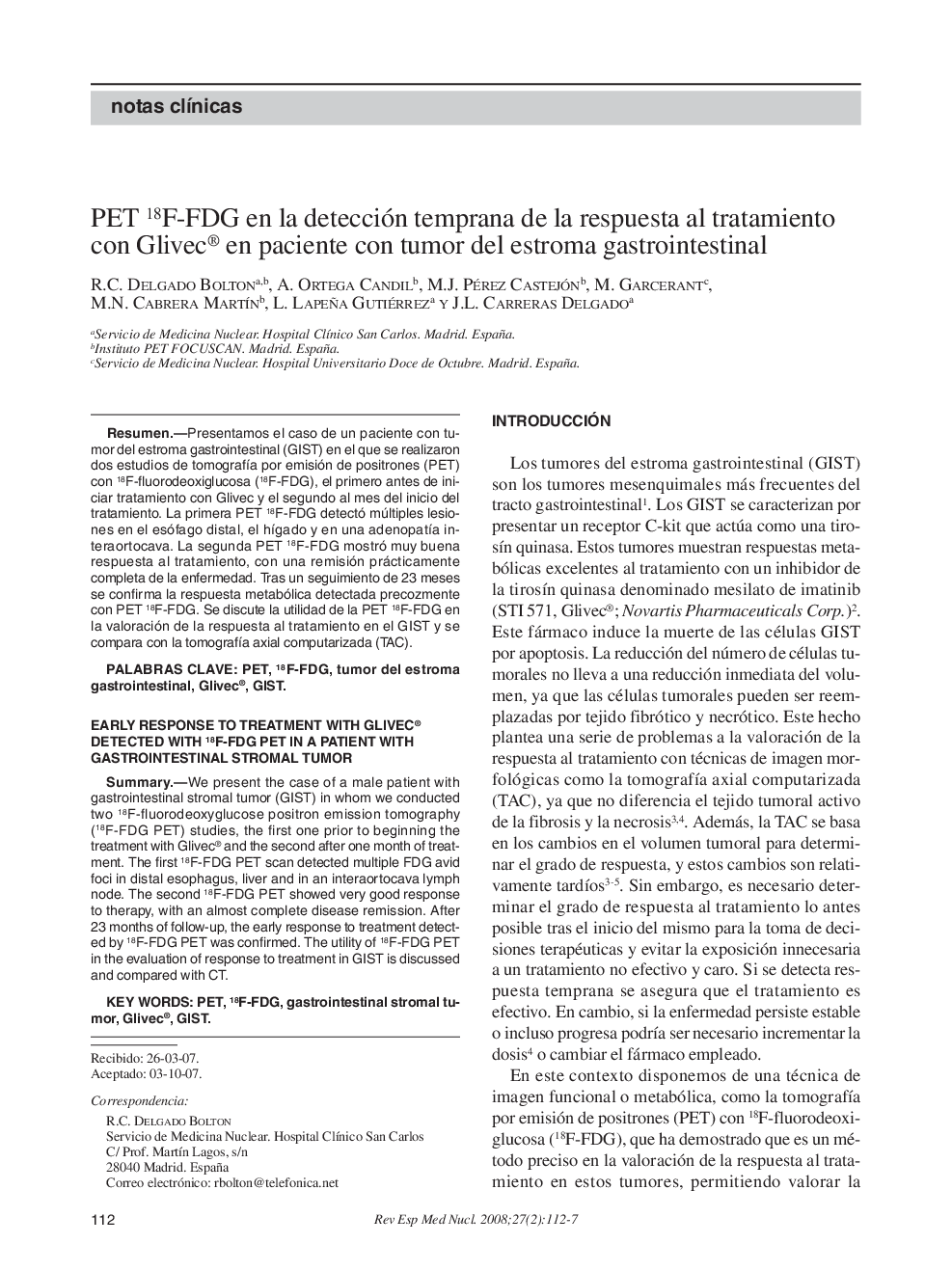| Article ID | Journal | Published Year | Pages | File Type |
|---|---|---|---|---|
| 4249144 | Revista Española de Medicina Nuclear | 2008 | 6 Pages |
ResumenPresentamos el caso de un paciente con tumor del estroma gastrointestinal (GIST) en el que se realizaron dos estudios de tomografía por emisión de positrones (PET) con 18F-fluorodeoxiglucosa (18F-FDG), el primero antes de iniciar tratamiento con Glivec y el segundo al mes del inicio del tratamiento. La primera PET 18F-FDG detectó múltiples lesions en el esófago distal, el hígado y en una adenopatía interaortocava. La segunda PET 18F-FDG mostró muy Buena respuesta al tratamiento, con una remisión prácticamente completa de la enfermedad. Tras un seguimiento de 23 meses se confirma la respuesta metabólica detectada precozmente con PET 18F-FDG. Se discute la utilidad de la PET 18F-FDG en la valoración de la respuesta al tratamiento en el GIST y se compara con la tomografía axial computarizada (TAC).
SummaryWe present the case of a male patient with gastrointestinal stromal tumor (GIST) in whom we conducted two 18F-fluorodeoxyglucose positron emission tomography (18F-FDG PET) studies, the first one prior to beginning the treatment with Glivec® and the second after one month of treatment. The first 18F-FDG PET scan detected multiple FDG avid foci in distal esophagus, liver and in an interaortocava lymph node. The second 18F-FDG PET showed very good response to therapy, with an almost complete disease remission. After 23 months of follow-up, the early response to treatment detected by 18F-FDG PET was confirmed. The utility of 18F-FDG PET in the evaluation of response to treatment in GIST is discussed and compared with CT.
